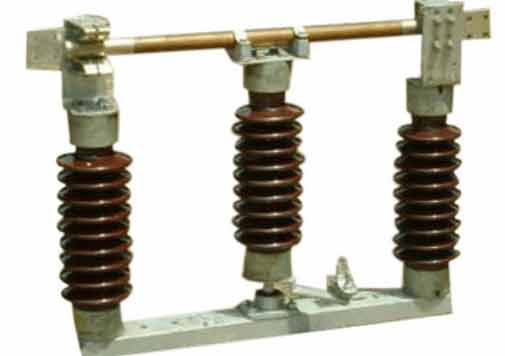Table of Contents
What Is Isolator
The isolator is a manual mechanical switch that disconnects any part of the electrical equipment from the system as needed.
Isolators are usually operating in no-load conditions or offline. There is no special arrangement for the arc extinguisher. Electrical sub-stations for separating the transformer from no-load or lightly loaded lines. Isolator Is used.
The difference between the isolator and the circuit breaker
Isolators and circuit breakers are both basically switches that disconnect a part of the circuit from the power system.
Isolator Is an off-loading device where the circuit breaker is an on-load device. That is, the isolator cannot be operated when there is a load, where the circuit breaker automatically operates when there is a system error. Isolator There is no mechanism to extinguish the arc.
One question may be going on in many heads ???
Isolator cannot be operated while loaded, ie to operate offline, so why is Isolator used?
We know that the circuit breaker automatically disconnects the line in any case (no-load, full-load, and faulty). But we cannot directly see the circuit breaker that made the trip or disrupted the line. It is said not to touch any part of the circuit after a single trip or when the line is disconnected.
Good arrangement is needed for good safety so that it touches any part of the circuit before being seen open.
Use of Isolators
Maintenance of apparatus connected to the mainline to stop the charging current of the transmission line in case the machine is detached from the mainline. Isolator Is used.
Isolator Types
Based on the needs of the system Isolator There are many different types
- Double Break Isolator
- Single Break Isolator
- Pantograph type Isolator
Depending on the power system, the isolator can be divided into the following sections:
- Bus Side Isolator: Which is directly connected to the main bus
- Line Side Isolator: The line side positions it with any feeder.
- Transfer Bus Side Isolator: এই Isolator Directly connected to the transfer bus.
Rules for Opening and Closing the Circuit Isolator
In case of opening:
- First, you have to open the circuit breaker
- Isolator Have to open
- The earthing switch needs to be switched off.
In case of closure:
- First, you have to open the earthing switch.
- Isolator Have to stop
- The circuit breaker must be closed.
Isolators are installed on either side of the circuit breaker

When a low voltage line or home electrical work is repaired or maintained, the electrician mains the switch and fuses to ensure the switch is open and this is the rule. Because accidentally switching on the KO main switch will cause the line operator to crash.
Just like high tension (H.T) After operating the circuit breaker while fixing the fault on the line Isolator Disables the line completely. Most circuit breakers are remotely controlled so anyone can accidentally turn on the line.
On either side of the circuit breaker Isolator If fitted easily Isolator, The circuit breaker can be opened and brought out for repair. So even though a circuit breaker is installed on the system for the greater safety of electricians Isolator Is fitted.
Reference by,



2 comments
I do accept as true with all the ideas you have offered to your post. They are very convincing and will certainly work. Nonetheless, the posts are very quick for novices. May just you please extend them a little from subsequent time? Thank you for the post.|
Electrical Isolator plays a very important role Isolator switches are used for opening an electrical circuit in the no-load condition. It is not proposed to be opened while current flows through the line. Thank you for sharing the best information regarding the Electrical Isolator Working, Types and Applications